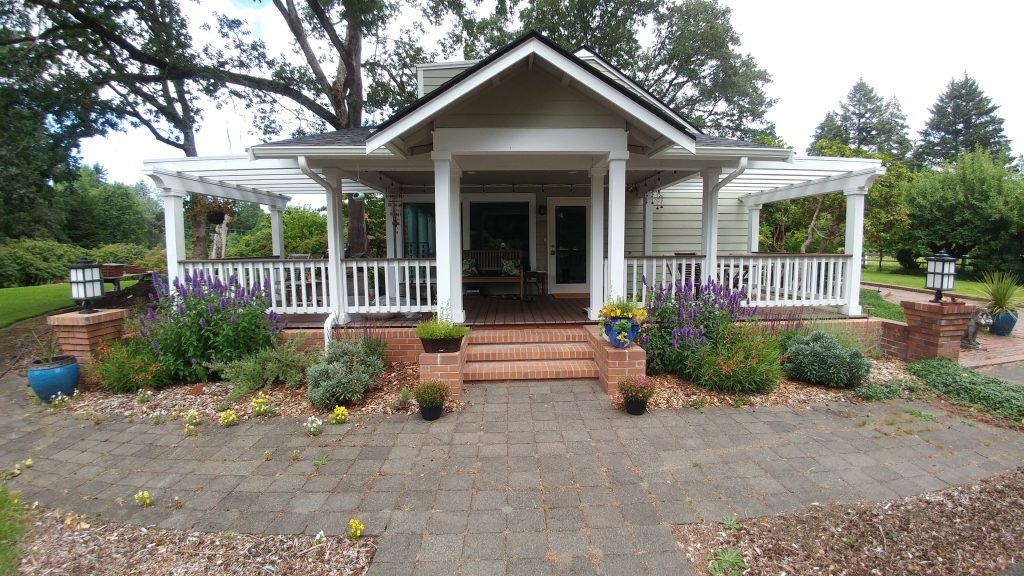
Two years ago I installed a pollinator garden in early July. This goes against my recommendation to install plants in the fall, when roots have longer to get established and less stress is felt on the rest of the plant. But I wanted to see what would happen if I was careful to mulch well and keep it irrigated. Oh, and did I mention I was going to root wash every one of them? (Be sure to look at that process in the link from 2018.)
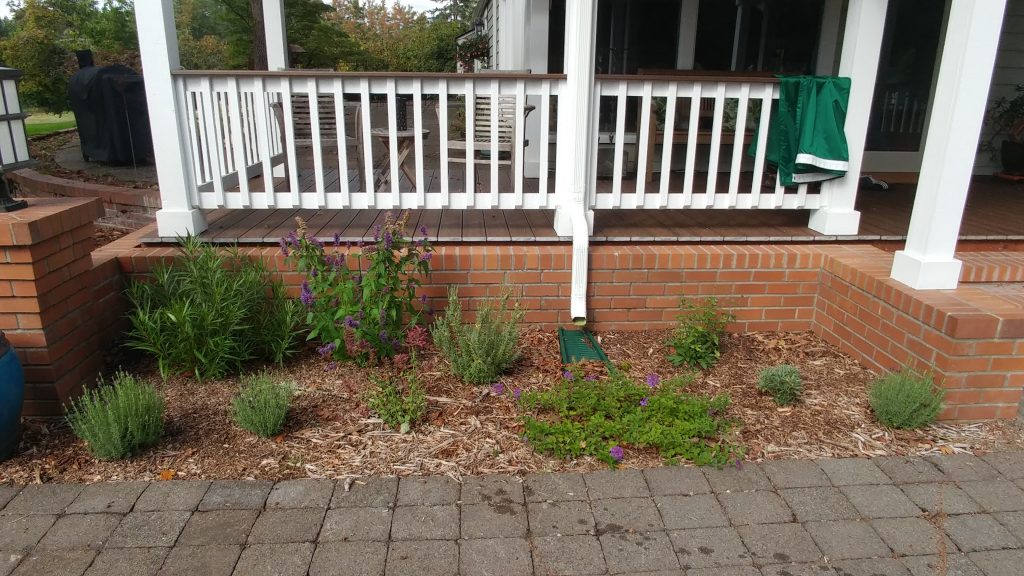
Southwest garden, October 2018 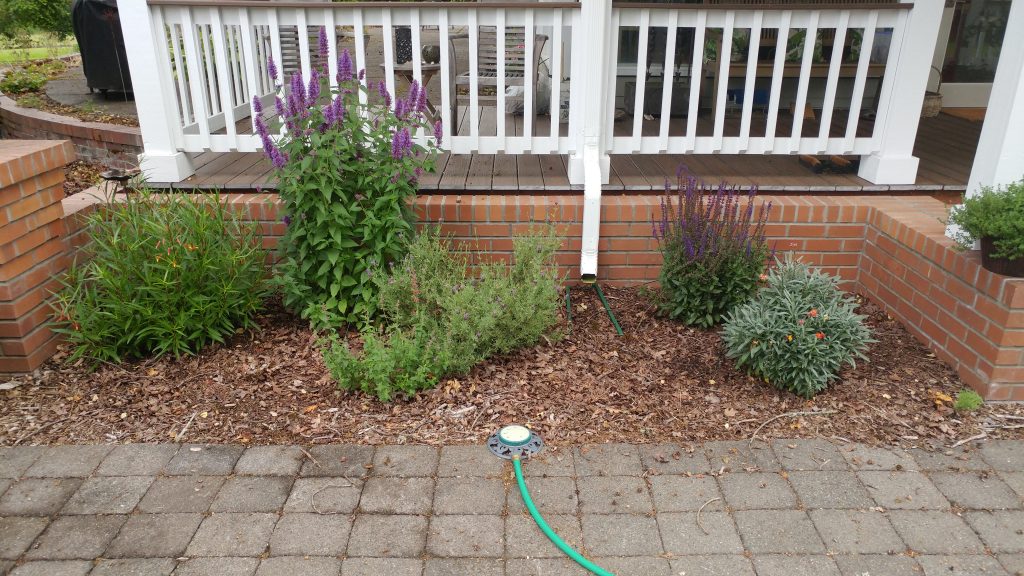
Southwest garden, July 2019
I reported on progress last year, and this year shows even more vigorous growth by nearly all the plants. Two of the three ‘Bandera Purple’ lavender died over the first winter, as they were marginally hardy (USDA 7-10) for our area. One straggler remains in the lower right hand corner of the photo below. The Agastache ‘Acapulco Red’ and the Verbena ‘Homestead Purple’ were planted near the front of the beds on both sides and while they survived the first year, they are now gone. My guess is that our cold snap in February 2019 wiped out those plants that were in less protected locations. Perhaps we’ll fill those spots in later with something more cold hardy, or just let the escaped Viola tricolor continue to colonize bare spots.
Overall, the garden is wildly successful in attracting hummingbirds and a variety of native bees and other insects.
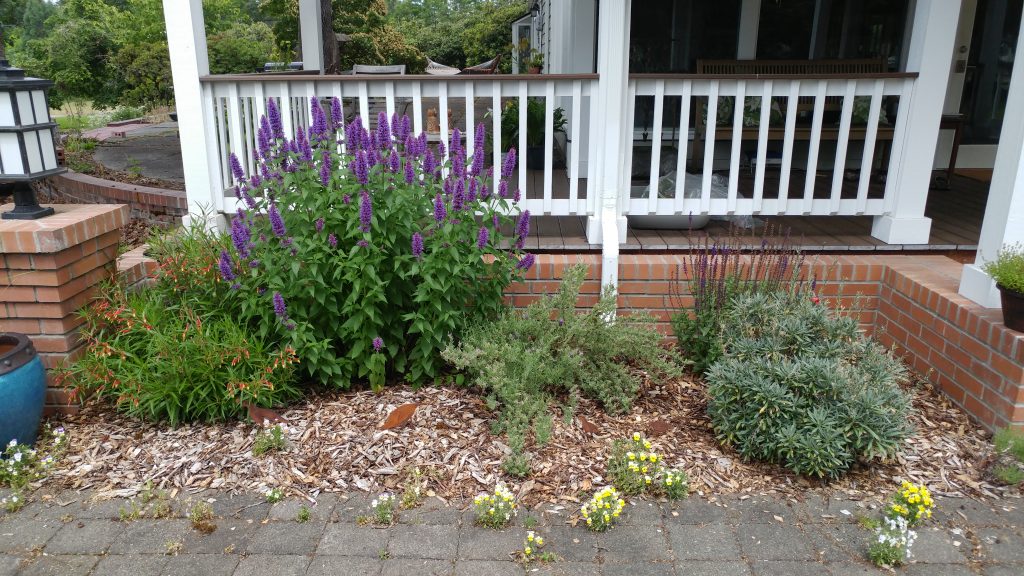
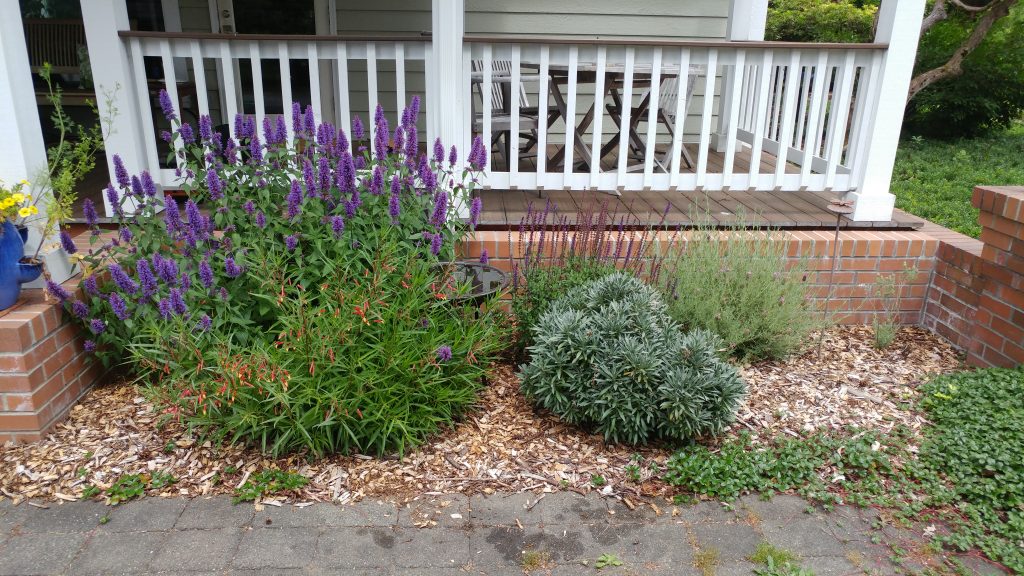
I still have a little work to do – I’m relocating the strawberry adjacent to the southeast garden so it stops invading the perennial bed. But after that I’m calling this garden finished.
If I’m allowed: this is exactly the difference between an “experiment” and a “garden”: perfectly sound as a gardening trial, scientific technique, but aestitically questionable, as the overall result is concerned. I am a scientist by training, and concerned about the overall aesthetics of my garden ( I’m Italian, and AVID reader of your blog). Best regards